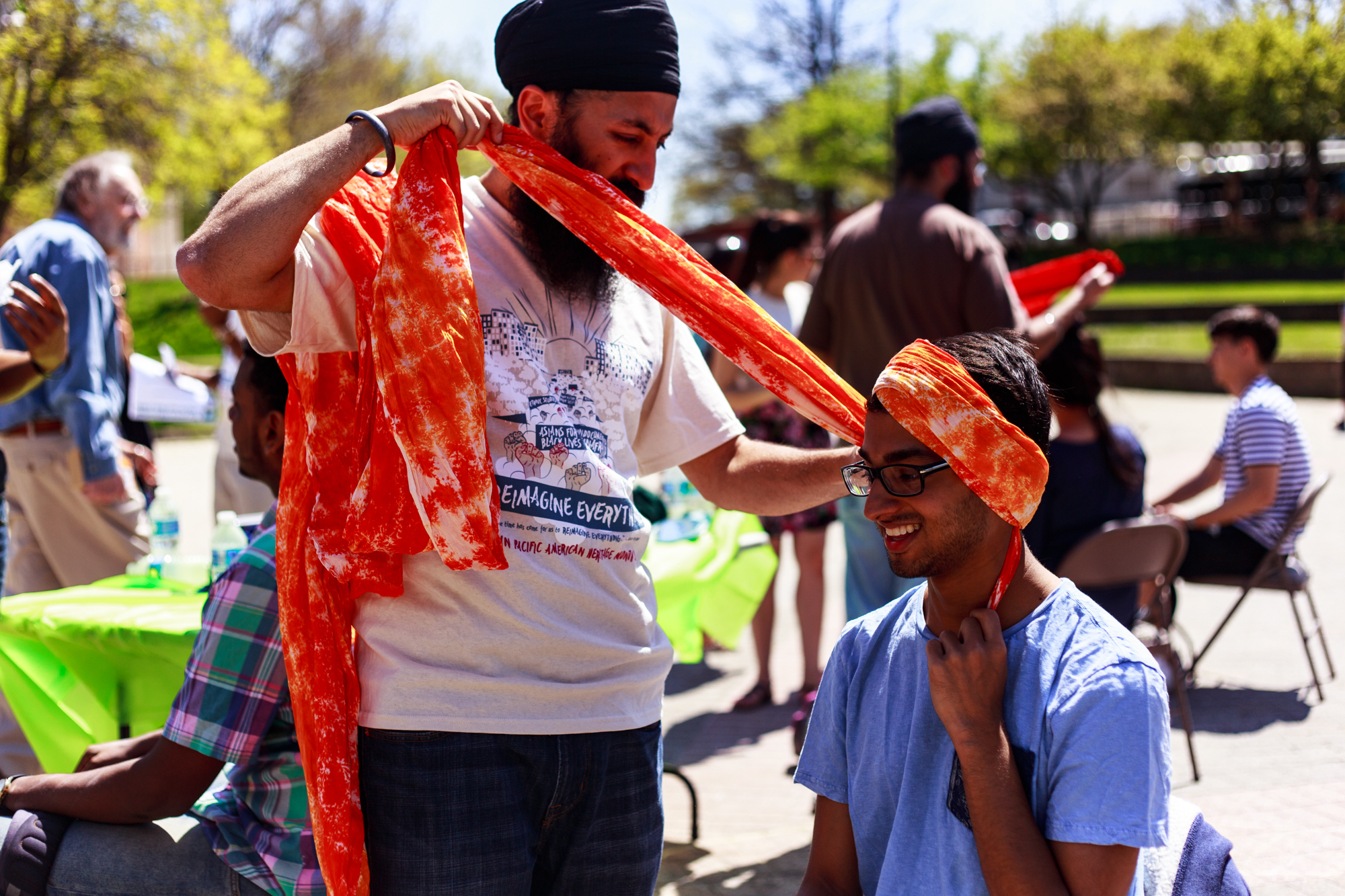The University of Maryland’s Sikh Student Association set up in Hornbake Plaza on Monday afternoon educating students about the Sikh religion while placing a turban on students who volunteered.
The group mentioned that the majority of people seen wearing turbans are of the Sikh faith. About 60 percent of Americans don’t know anything about the 500-year-old religion, according to a study from the National Sikh Campaign.
Amanpreet Kaur, a sophomore psychology major, said numbers like those contribute to why the group planned its first ever Turbans for Terps event on this campus.
“[We wanted] to raise awareness about the turban and its significance to the Sikh faith,” she said. “It is the fifth-largest religion in the world, however, not many people know about it so we thought we’d make a huge event out of it. It doesn’t signify something bad, it doesn’t signify hate. It signifies standing up for justice, peace and just being loving.”
The tent was set up for four hours during the day, and Kaur said the group saw more than 100 students, both men and women. Most were even more interested in trying on a turban than eating the free food the group distributed.
“This is my first time ever [getting a turban],” said Neilesh Sud, a freshman enrolled in letters and sciences. “I’m a Hindu, just out here supporting the cause.”
Turbans for Terps had one goal: to educate people about the religion and counteracting negative preconceptions, Kaur said. All Sikhs who take Amrit — an initiation ceremony into the religion — must carry around five articles of faith, known as The Five Ks, one being Kesh, or uncut hair.
In the religion, letting hair grow out naturally is an important way to show devotion to their God, and the men wrap long hair in turbans to protect it.
Gurdev Anand, a member of the Sikh Student Association at the University of Maryland, Baltimore County, helped put the traditional turbans on guests at the event. The process of putting on a turban properly can take about five minutes at a time, he said.
Anand said he has been wearing a turban since he was 3 years old, and it has become an extension of his personality, as it does for many.
“However you see yourself is how you wear your turban,” Anand said. “I have some friends that are really out there, flamboyant and hyperactive, and you can see that in their turbans with bright colors and patterns.”
In Punjab, the only Sikh-majority state in India, cities will have different styles of the turban and these styles are “like accents for turbans,” Anand said. He said he experimented a lot in high school with how to wear the turban himself.
Serving food to worshippers and guests in the Gurdwara, a Sikh place of worship, is another major tenant of the religion. The Sikh Student Association wanted to make sure it conveyed that principle at the event.
“It was volunteers with the Sikh Student Association [that made the food],” Kaur said. “We had Punjabi baked goods such as a samosa, jalebi and milk cake. A key point is that the food is all completely vegetarian, so that it would be able to equally serve everyone.”



